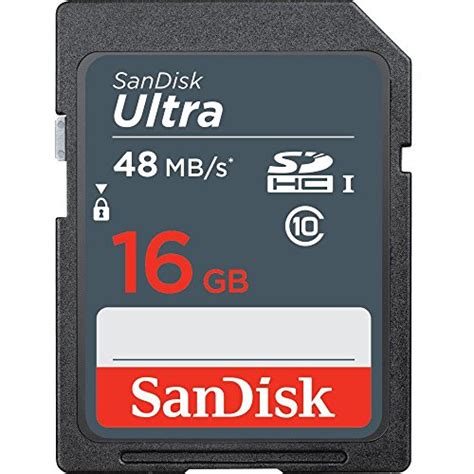
Click here for instant access…
Bad training equals high turnover.
In their 2020 Retention Report, Work Insitute found that the top cause - for the third year in a row - of employee attrition is lack of career development. At 20 percent, that's nearly twice the amount for work/life balance (number two reason).
Call centers are notorious for their attrition rates. With a 2019 average of 30 - 45 percent, it's well-deserved.
Call center agents need to be adept at a number of abilities, from the technical know-how to soft skills such as empathy.
The fact is: You won't get that with inexperienced agents.
To keep the best candidates, you need to give them the tools they need to succeed. Not only will you gain a reputation for valuing your employees, but you'll actually attract higher quality hires as a result.
A well-trained workforce increases morale, customer satisfaction, productivity, and performance.
Make no mistake: training is an investment. You're putting time and money into an individual you hope will deliver a first-rate performance and bring back a hefty ROI.
At Process Street, we've created this checklist to help you accomplish just that.
Trainees will be able to advance through each task, while you can easily keep track of their progress.
Process Street is super-powered checklists.
Our simple interface lets you create procedures, run processes, and integrate with 2,000+ apps to automate your recurring workflows so your employees can focus on the really important things.
With Process Street, you'll minimize human error, increase accountability, and empower your employees to complete tasks efficiently and accurately.
Ready to optimize your workflow? Let's go!
Checklists should start like all good beginnings: establishing the who, what, when, where, and why. This section deals with inputting all the essential information about the quality assurance audit. Each task has a stop tasks in place to make sure nothing gets left out. A stop task stops a checklist at a particular point, preventing any task after that point from being completed until the stop task is complete.
First thing's first: Add details of the trainee, their supervisor, and the trainer. Type them in the appropriate form fields below.
Using the tools on the right, you can customize this with as much or as little information as you need for each audit.
If you want to edit this checklist template and its features (short text, email, dropdown, date entry, etc.) that's easy to do by clicking on the "edit template" button.
Policies guide individuals in decision-making and reaching desired outcomes. This ensures that customers receive a consistent experience, and employees know what to expect. The following section will cover these topics:
The final task of this section includes an approval. This means the trainer will need to approve the quiz results before the trainee can move on.
(Source)
While procedures are often based on policies, the two function very differently.
Procedures are constantly being changed and improved to meet different needs.
Procedures exist in every aspect of our lives. These vary from informal procedures like how you get ready for work, to societal ones such as paying taxes or voting in an election.
Procedures ensure tasks are done smoothly and without bias, miscommunication, or errors.
Policies, on the other hand, change infrequently and cover a broader statement of purpose. Policies are best used as a guide when making decisions.
Interacting with the public, by definition, entails a certain amount of unpredictability. Following company policies, however, allows you to make rational decisions in line with company standards and expectations.
Policies cover every aspect of how the company operates. Fortunately, you don't need to memorize all of them.
There are several policies, however, that relate specifically to interactions with customers and handling sensitive data.
It's important to follow these policies in every instance. Violating policy can result in disciplinary action, termination, or even legal consequences.
Read the policy guide and discuss with your trainer before answering the questions below.
Procedures are the practical application of policies. Some of the procedures may seem unnecessary at first, but they have all been developed with the following in mind:
Review the procedure manual with your trainer and then answer the questions below.
Please answer the following questions to the best of your ability. Once you have finished, your trainer will review the answers with you, and discuss any further questions you may have.
(Source)
Every part of your interaction with a customer is important, from the moment you answer the phone until the moment they hang up. The following tasks will guide you through every step of the call process. If you are unsure about any aspect of the process or have any questions, please speak to your trainer.
Any time you interact with a customer, you represent the company.
If the customer perceives you as rude or dismissive, they will have a negative impression. If you are friendly and helpful, they will feel more positively.
Discuss the following procedure with your training group:
Effective problem-solving makes up a large part of your daily responsibilities.
Unfortunately, there's no formula that works every time.
Customers may be upset and need to vent. They may be confused, frustrated, or even unsure what the problem is.
As the agent handling their situation, though, you need to remain calm and composed throughout.
Discuss how the following tactics can help you solve problems in the future:
Can you think of other tips for effective problem-solving?
Customers do not like being transferred.
Sometimes, though, it's unavoidable.
In those cases, you need to have the appropriate soft skills to reassure the customer, but also the technical skills to transfer the call without dropping it.
It's undeniable that cross-selling and upselling are valuable tools for increasing revenue.
You have a 60-70% chance of cross-selling to a current customer, while there's only a 5-20% chance of converting a new prospect.
As a sales agent, you need to be at the top of your game so you don't inadvertently alienate your customer in the process.
Use the following procedure to successfully upsell a customer:
(Source)
Agents need to connect with the customer, while still behaving professionally.
After all, you represent the company's values and ethos to your customer.
Every action you take should reflect positively on our products, services, and company.
Sales reps have a bad rep.
Tell someone you're in sales, and many people will conjure an image of a smarmy used car dealer, or an aggressive man in a suit.
We know those are just stereotypes, though. But how do you sell when the customer already expects the worse?
While it helps to be gregarious sometimes, you also need to be able to step back, listen, and build rapport with your customers.
It can be a fine line between connecting with a customer, and talking too much on a call.
Hitting the markers on the list below, however, will go a long way to helping you close that sale.
No matter where your company is located, or what industry you're in, there will be legal regulations that must be followed.
Many of our company policies are built around meeting these regulations, but as an international company, there will sometimes be laws in other countries that must be taken into consideration.
In addition to your own and the company's compliance with these regulations, understanding them will also allow you to explain our policies more adequately to our customers.
Violating these regulations can be costly - for you, the customer, and even the company. In certain cases, you may even face prosecution.
It keeps everyone operating on the same, consistent level of service with no unpleasant surprises - which is exactly what you want.
Discuss some of the regulations below with your group. Why do you think these regulations are in place?
You may not realize it, but finishing a call correctly is as important as the call itself.
The wrong ending to a call can be disastrous in terms of customer perception.
You may perform every step correctly, and then flub the wrap-up by cutting the customer off.
That's what your customer will remember. And they won't be happy about it.
That can be avoided by using the actions below.
(Source)
Roleplaying is an important training tool that allows you to build confidence with new skills.
When it comes time for you to implement these interactions during a real call, you'll be assured in your abilities.
The last section includes a quiz on the materials you've covered so far. This quiz is merely to ensure you have a solid understanding of our expectations for our agents. Don't worry if you get a question wrong; your trainer will review with you any items that you are still unclear about.
Once the trainee completes the quiz, the trainer will be asked to approve the results. An approval is a powerful feature that streamlines the authorization process. By approving the results, the trainer confirms the trainee has answered every question correctly. If an answer is incorrect, the trainer can reject the results and the trainee must perform the quiz again after a review.
Please answer the following questions to the best of your ability. Once you have finished, your trainer will review the answers with you, and discuss any further questions you may have.
Congratulations! You have successfully completed the Call Center Agent Training Program! Your trainer will now forward your results, and your new supervisor will coordinate with you for your first shift.
(Source)
The final section is for the trainer to do. These tasks make use of several dynamic Process Street features: conditional logic, variables, and the email widget. Check out the video below for a brief overview of Conditional Logic! (We also have an entire webinar on Conditional Logic that you can access here.)
After reviewing the trainee's quiz and overall performance during training, you must now recommend whether or not you feel they are prepared to move to the call floor.
Think carefully about your recommendation, and use the long text field below to document the reasons behind your decision.
Once you've completed this task, you'll forward the results to the trainee's supervisor.
This task utilizes conditional logic. If the training has been successful, then a task to send a positive recommendation will apear. If the training has been unsuccessful, then a task to send a negative recommendation will appear.
In this task, variables have been used to populate an email from data entered previously in the checklist.
Variables can be added to text and email widgets to display 'variable' information unique to each checklist of a template.
The email widget allows you to send pre-written emails with the click of a button.
Only send this email if the trainee has passed the training program.
 Smead 100 Recycled Pressboard Classification File Folder 1 Divider 2quot Expan
Smead 100 Recycled Pressboard Classification File Folder 1 Divider 2quot Expan
 Classic Accessories Veranda Water Resistant 11 Foot Patio Umbrella Cover
Classic Accessories Veranda Water Resistant 11 Foot Patio Umbrella Cover
 Sandisk 16 Gb Class 10 Sd Hc Ultra Flash Memory Card 10 Pack Bundle With
Sandisk 16 Gb Class 10 Sd Hc Ultra Flash Memory Card 10 Pack Bundle With
 Fairwin Braided Leather Dog Training Leash 6 Foot 56 Foot Military Grade H
Fairwin Braided Leather Dog Training Leash 6 Foot 56 Foot Military Grade H
 3m Reflective Dog Leash 5ft Long With Traffic Padded Handle Dog Training Leas
3m Reflective Dog Leash 5ft Long With Traffic Padded Handle Dog Training Leas
 How To Be Your Dogs Best Friend The Classic Training Manual For Dog Owners
How To Be Your Dogs Best Friend The Classic Training Manual For Dog Owners
 Classical Naptime For Tots
Classical Naptime For Tots
 Doggie Stylz Set Of 2 Reflective Therapy Dog In Training Removable Patches Wit
Doggie Stylz Set Of 2 Reflective Therapy Dog In Training Removable Patches Wit
 6 Pcs Service Dog In Trainingworkingstress Amp Anxiety Response Embroidere
6 Pcs Service Dog In Trainingworkingstress Amp Anxiety Response Embroidere
 Service Dog In Training Patch With Hook Back And Reflective Lettering For Servic
Service Dog In Training Patch With Hook Back And Reflective Lettering For Servic
 Four Paws Wee Wee Pee Pads For Dogs And Puppies Training L Gigantic Xl St
Four Paws Wee Wee Pee Pads For Dogs And Puppies Training L Gigantic Xl St
 Pny 128gb Elite X Class 10 U3 V30 Microsdxc Flash Memory Card 100mbs
Pny 128gb Elite X Class 10 U3 V30 Microsdxc Flash Memory Card 100mbs














